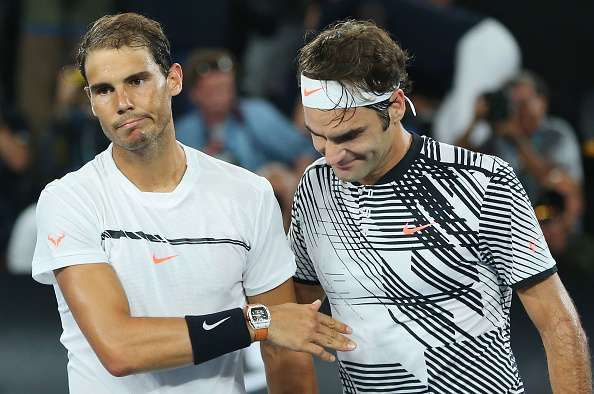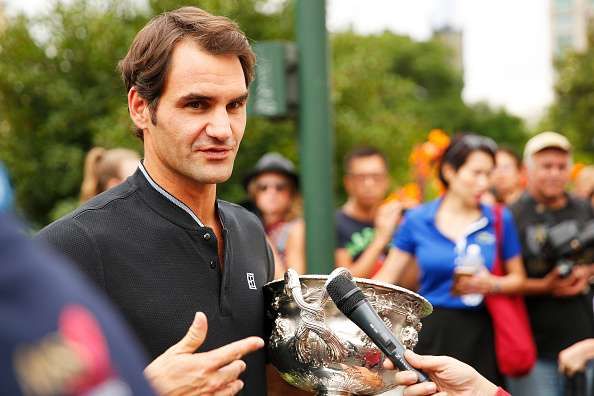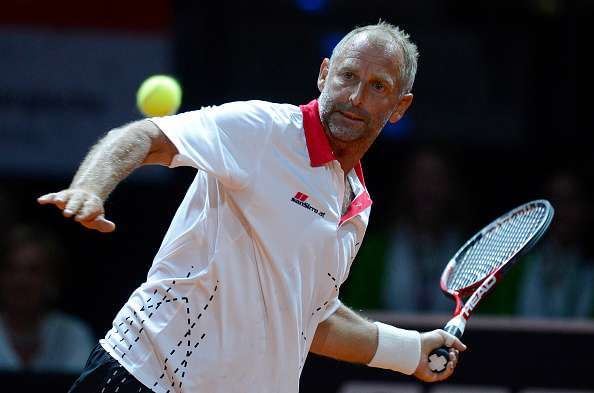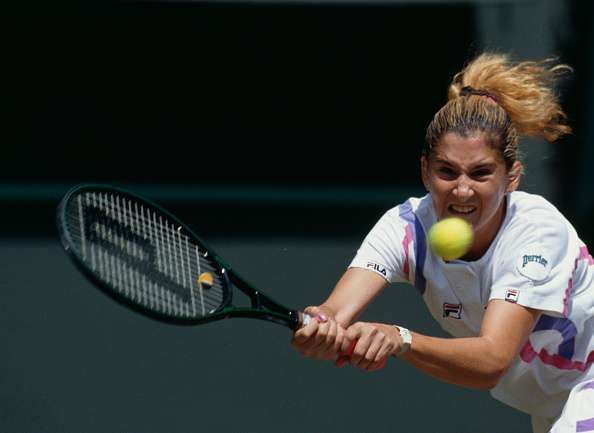Kim Clijsters (2009 US Open)
Belgian ace Kim Clijsters was immensely successful in the singles and the doubles, and was ranked World No. 1 in each discpline. Successful as a junior, a young Clijsters made her big professional breakthrough at the age of 16, in 1999.
She won her debut WTA title that same year in Luxembourg, and within the next four years made multiple Grand Slam finals, contesting for the World No. 1 spot. With immense consistency, Clijsters attained the No. 1 ranking in the latter half of 2003, holding it for three months.
Although she made the finals of the French Open and the semi-finals at Wimbledon en route, it would not be until 2005 that Clijsters won her first Grand Slam title at that year’s US Open.
It was that year that Clijsters had decided, she said, to retire at the end of the 2007 season. She had consistent results en route, and in 2006 made yet another Wimbledon semi-final.
Although she had planned to retire only at the end of 2007, struggling with injuries, the Belgian announced she would be calling time on her professional career at the age of only 26 in May of 2007.
She played exhibition tournaments in the following couple of years, but in 2009 Clijsters, who had struggled in the interim with the death of her father Lei Clijsters, to whom she was very close, and the birth of her first child, decided she would return to professional tennis.
Clijsters played a number of big tournaments on wild cards, progressing well into tournaments only to see late losses.
Despite this, however, Clijsters fought on till the main draw of that year’s US Open. She pulled off a series of significant upsets, over Serena and Venus Williams, Li Na and Kirsten Flipkens, becoming the first player since Venus Williams in 1997 to make it to the finals of the US Open unseeded. Clijsters also became the first ever wildcard finalist of the US Open.
And Clijsters grabbed the opportunity head-on. Up against former No. 1 Caroline Wozniacki in the finals, Clijsters declared her return with a 7-5, 6-3 win, as a result becoming the US Open’s maiden wildcard winner.
Having just had a child the year prior, she also became only the second player in history to win a grand slam after becoming a mother – the first being Australian former No. 1 Evonne Goolagong-Cawley.
Rafael Nadal
Spanish ace Rafael Nadal has had form, and then some, in the 2017 season. But 2016 was a season of misses for him, although he did not, per se, take a ‘break’ from the sport.
But that is something he has done in the past. The Spanish ace’s struggles with injury are reccurent and not recent, and after a dip in late 2014, Nadal struggled in the 2015 and 2016 seasons. Between middling-to-low results and shock losses, Nadal’s year had looked grim.
Grand Slams also did not bring much success for Nadal, with the Spaniard eventually sitting out both the French Open and Wimbledon, returning to the US Open only to suffer an early loss.
With his significant dip in form, Nadal looked to be both down and out, and admitted to serious burnout.
This year, however, Nadal has been nothing short of his early-2000s form. The Spaniard blazed through a not-so-easy Australian Open draw to set up a blockbuster final against Roger Federer, and although he did not win, was in the match until perhaps the final game.
Roger Federer
To think of Roger Federer as anythinhttps://www.facebook.com/uniladmag/videos/2402678949755150/g but one of the all-time greats, if not the all time great, is rare these days. After a blockbuster performance at Wimbledon last year at the ‘advanced’ (for a tennis player, at least) age of 34, Roger Federer played two big five-set matches – in the quarter-finals and semifinals. After battling a match-point-holding Marin Cilic to progress to the semis, Federer fought valiantly against Canadian Milos Raonic – but by then fatigued, and already struggling with old, recurrent injuries, the Swiss legend bowed out at that stage.
It was following these two big matches at Wimbledon that the Swiss, who had rolled his ankle in the semis, announced he would be taking an extended six-month break from the sport to recuperate.
That decision had sparked worry among fans, who wondered aloud if Federer planned to announce an early retirement. But as early as October, Federer, who hda already got back to his fitness regime in the interim, was seen practicing on the courts of Switzerland, hitting with longtime friend and 2016 US Open winner Stan Wawrinka.
In November and December, Federer returned to his off-season practice base of Dubai, where he live-streamed hitting sessions with French ace Lucas Pouille and looked to be in top form.
He carried that form – and his enthusiasm – into early 2017, playing only the exhibition tennis Hopman Cup prior to the Australian Open. By then, he had already dropped to a ‘lowly’ – for Federer, at least, and came into the Australian Open on that ranking.
After decimating then No. 10 Tomas Berdych in straight sets, Federer tackled Kei Nishikori and won, finally setting up the dream final clash against his archrival Rafael Nadal.
And after 5 years without a Grand Slam, meeting Rafa for a 35th time, Roger Federer beat Rafael Nadal in the first Grand Slam since his comeback.
Thomas Muster
Austrian ace Thomas Muster is a former World No. 1. In 1989, the ace, despite having only one Major title to his name, was considered one of the best clay-court specialists and a very successful player on that surface. That is not to say, however, that the then-22-year-old Muster was not a successful player. Just the previous year, he had reached six Tour-Level finals, and in 1989 reached the semi-finals of the Australian Open, losing to then-No. 1 Ivan Lendl.
Soon after, Muster set up another big match against Lendl, this time at the finals of the Lipton International Players’ Championships in Florida.
But fate had different plans for Muster: only a few hours after his win, the 22-year-old was struck in the road by a drunk driver. Forfeiting the trophy – and potentially ending his career with the injury, Muster flew back to Austria for treatment.
Those injuries may well have spelled the end for his – or any other player’s career – but Muster was seen, soon after his surgery, practicing tennis with a twist. The Austrian had a wheelchair designed specifically for him, from which he would practice tennis every day.
In September of 1989 – only five months after the surgery, Muster returned to competitive tennis.
To say that he quickly came back to form would be unfair to the Austrian – by 1990, Muster not only won three Clay Court Masters titles, but reached the semi-finals of the French Open that year, only losing to eventual winner Andres Gomez.
Over the next three years, he won twelve Tour level titles, nearly half of them Masters-level.
He had immense success over the next few years, the best of his career, and seven years after a drunk driver nearly ended his career, Muster hit the World No. 1 rank in 1996.
After a number of successful years, Muster took his first retirement in 1999. At 42, over a decade later, Muster announced that he would be returning to professional tennis. He had middling results over the next couple of years, finally retiring in 2011.
Monica Seles
Pipped to be one of tennis’ Greatest of All Time, former World No. 1 Monica Seles was well on that path, and up against the biggest talent of the day, Steffi Graf, the then-Yugoslav ace had impressed and then some.
She had already won nine majors by 1993, eight of them as a teenager. Given her stupendous form and impressive gameplay, many expected Seles to surpass her own records by miles.
In the run-up to 1993, Seles had amassed a number of titles on Tour as well and set WTA records en route.
Unfortunately, all that would change in 1993, when she was still ranked World No. 1.
At that infamous Hamburg quarter-final against Magdalena Maleeva, a crazed fan of German ace Steffi Graf – Seles’ biggest competition, stabbed Seles in the back with a boning knife.
The physical injuries healed in fairly quick time, but the extreme mental trauma the attack caused saw Seles abstain from tennis for two years, and vowing never to play tennis in Germany again, with her attacker not receiving a prison sentence.
Making a comeback in August 1995, Seles won the first tournament she played – that year’s Canadian Open, and dropped only 14 games en route to the title, a record at the tournament.
She continued that form into the US Open, speeding through to the finals where she lost to nemesis Steffi Graf – but managed to scrape a set off the ace in the best-of-3 final.
Only months later, Seles managed to reach the semi-finals of the Australian Open, and was down two match points to upcoming American star Chanda Rubin. Seles, however, managed to pull off a mammoth comeback to set up a final against Germany’s Anke Huber, and won her 10th Grand Slam title - the 1996 Australian Open.
Although that was her final Major title, Seles managed a couple of other finals – incidentally, the US Open final that same year, where she lost again to Graf, and the finals of the French Open in 1998, when she lost to Arantxa Sanchez-Vicario.
After a few sporadic years, Seles officially announced her retirement in 2008, but her inspiring comeback from what is considered the most traumatising event in the history of tennis is extraordinary.
Who Are Roger Federer's Kids? Know All About Federer's Twins




